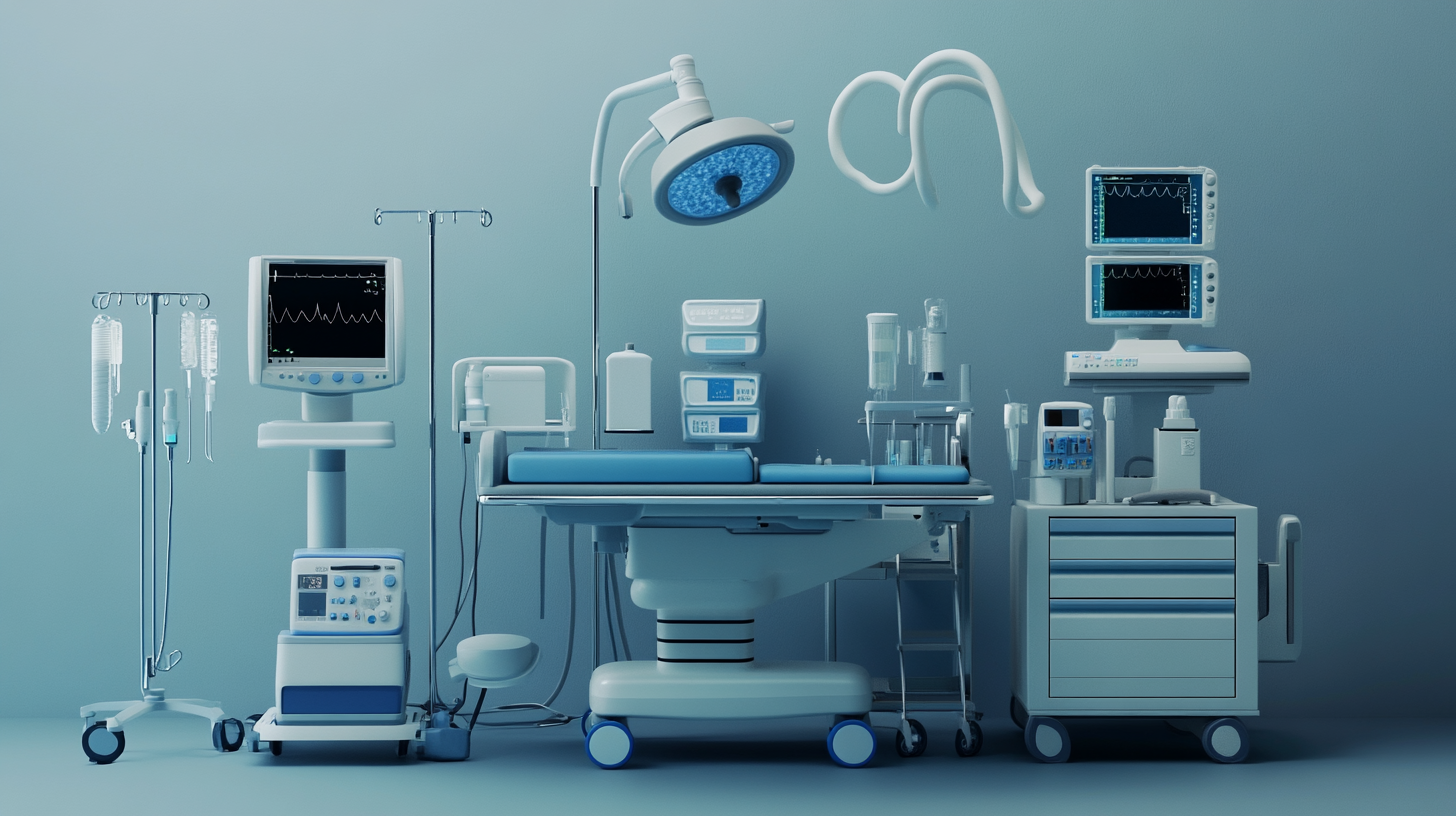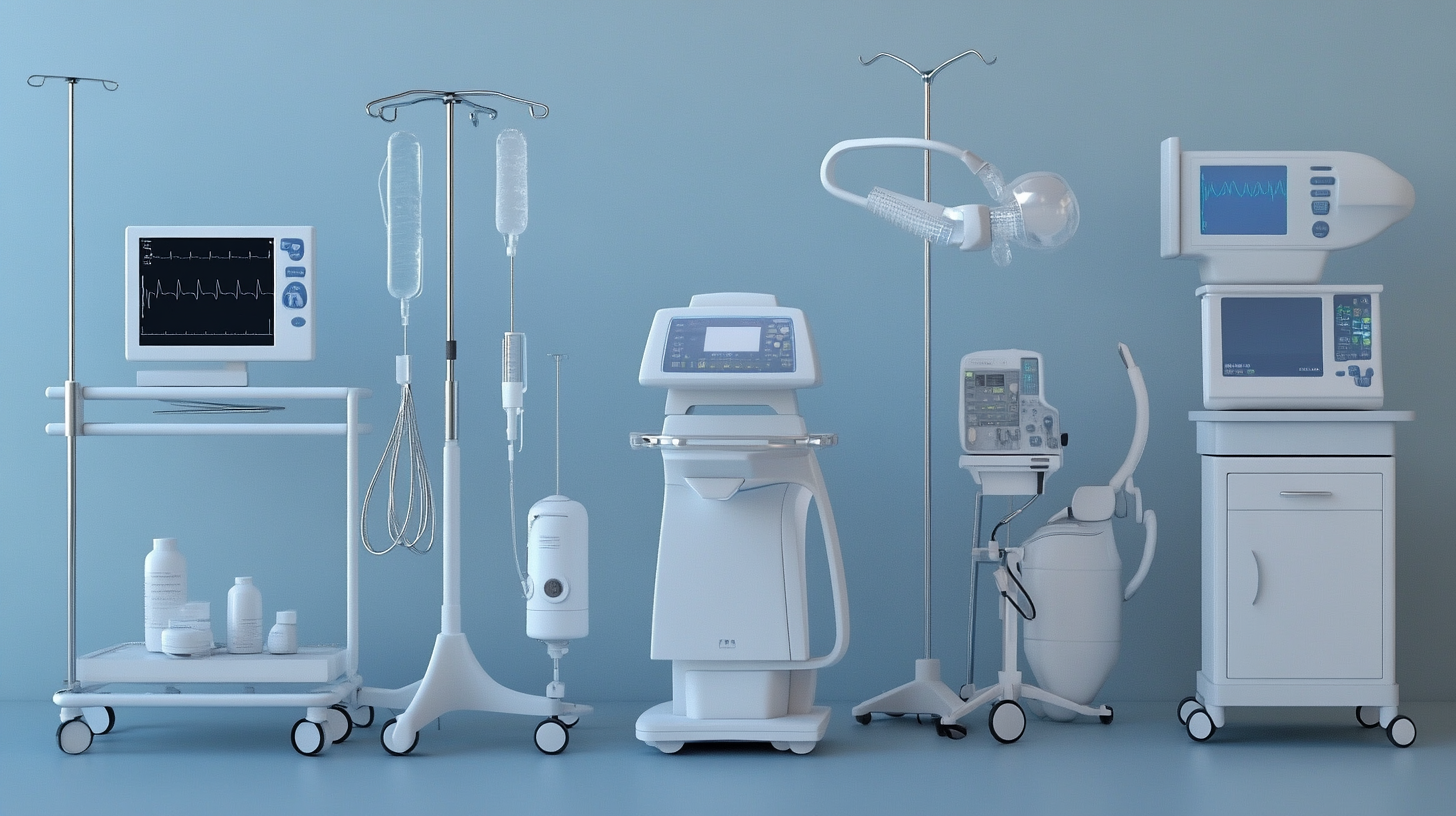Click here to browse our On The Mend Portfolio!
Comprehensive Guide to Best Medical Supply Equipment: Essential Specifications and User Tutorials
In today's rapidly evolving healthcare landscape, the demand for high-quality Medical Supply Equipment has never been greater. A recent report from MarketsandMarkets predicts that the global medical equipment market will reach a staggering $612 billion by 2025, driven by advancements in technology and increasing health awareness among populations. This growth underscores the importance of selecting reliable medical supplies that meet stringent specifications and regulations. As China continues to expand its footprint in this sector, the phrase "中国制造,以品质赢得世界尊重" reflects a commitment to quality that is resonating globally. This comprehensive guide will delve into the essential specifications and provide user tutorials that empower healthcare professionals to make informed decisions regarding Medical Supply Equipment, ensuring safety and efficacy in patient care.

Understanding the Importance of Quality Medical Supply Equipment
Quality medical supply equipment is essential for ensuring effective patient care and optimizing healthcare outcomes. According to a report by Grand View Research, the global medical supplies market is expected to reach USD 208 billion by 2027, fueled by the rising demand for advanced healthcare solutions. This surge underscores the critical importance of selecting high-quality equipment that meets industry standards. Poor quality supplies can lead to complications, increased costs, and compromised patient safety.

When choosing medical equipment, consider the specifications that align with your healthcare practice. For instance, look for devices that have been certified by relevant regulatory bodies. This not only guarantees their reliability but also ensures compliance with safety regulations. Regularly reviewing equipment maintenance protocols and user tutorials can enhance your understanding of the products, fostering better utilization and efficiency in patient care.
Tip: Always verify the manufacturer’s reputation and read user reviews. Understanding user experiences with the equipment can provide valuable insights into its performance.
Moreover, investing in training for your staff can make a significant difference in how effectively these tools are used. Adopting a culture of continuous learning and improvement around medical supplies will ultimately lead to better patient outcomes.
Tip: Schedule consistent training sessions and workshops that focus on the latest medical technologies to keep your team proficient and informed.
Key Specifications to Consider for Essential Medical Supplies
When selecting essential medical supplies, understanding key specifications is vital for ensuring optimal performance and patient safety. Firstly, consider the materials used in the equipment. Biocompatibility is crucial, especially for devices that come into direct contact with patients. Materials should not only be durable but also non-reactive, reducing the risk of allergic reactions or infections. Additionally, the cleaning and sterilization processes must be factored in, as these can vary significantly depending on the equipment type.
Another important specification is the usability of the equipment. Look for user-friendly designs that facilitate ease of operation, especially for caregivers who may not have extensive training. Features such as ergonomic handles, clear labeling, and intuitive controls can greatly enhance efficiency. Moreover, weight and portability should be taken into account, particularly for mobile medical supplies that are frequently transported. Investing time in understanding these specifications will ensure that the medical supplies are not only effective but also safe and convenient for both medical professionals and patients.
Comprehensive Guide to Best Medical Supply Equipment: Essential Specifications and User Tutorials
| Item | Essential Specifications | User Tutorials | Usage Tips |
|---|---|---|---|
| Blood Pressure Monitor | Automatic, Digital, Cuff Size: Standard | How to Use a Blood Pressure Monitor | Ensure proper cuff placement, relax before measurement. |
| Glucose Meter | Test Strips Required, Blood Sample Volume: 0.5 µL | Glucose Meter User Guide | Store test strips properly, calibrate device if necessary. |
| Nebulizer | Mesh Technology, Portable, Medication Reservoir Capacity: 10 mL | Nebulizer Operating Instructions | Keep device clean, use recommended medications only. |
| Digital Thermometer | Fast Reading, FDA Approved, Battery Operated | Using a Digital Thermometer Effectively | Wait for beep indicating measurement is complete. |
| Pulse Oximeter | Oxygen Saturation Level, Heart Rate Monitor, Battery Life: 30 Hours | Pulse Oximeter Instructions | Use on clean, dry fingertip and remain still during reading. |
Step-by-Step User Tutorials for Common Medical Equipment
Navigating the world of medical equipment can be daunting, especially with the wide array of devices available today. Our blog offers step-by-step user tutorials tailored for common medical equipment, ensuring that both professionals and individuals feel confident in their usage. Whether you’re handling a blood pressure monitor, a pulse oximeter, or a nebulizer, our comprehensive guides break down each process into manageable steps. We understand that clear instructions are crucial, and our tutorials emphasize simplicity and clarity to facilitate a better user experience.
Moreover, our tutorials not only cover the operating procedures but also delve into essential specifications for each device. This empowers users to make informed decisions about the equipment they choose, catering to their specific needs and ensuring optimal performance. Follow along as we provide insight into troubleshooting common issues, maintenance tips, and best practices to guarantee safety and efficiency. With our detailed guides, you'll be well-equipped to handle these vital tools confidently and effectively.
Top Brands and Reviews: Choosing the Right Medical Supplies
When it comes to selecting the right medical supply equipment, understanding the top brands and their offerings can significantly impact your choice. Major brands like Medline, McKesson, and Drive Medical have established their reputations by providing reliable, high-quality products that cater to various healthcare needs. Each brand offers a wide range of equipment, from basic supplies like bandages and gloves to more specialized items like mobility aids and monitoring devices. It's essential to evaluate their product lines, as they are often tailored to meet specific medical needs or patient conditions.
In addition to brand reputation, reading user reviews can provide valuable insights into product performance and user satisfaction. Many customers share their experiences online, discussing the durability, ease of use, and effectiveness of the equipment they have purchased. By considering both the brand's specifications and real users' feedback, you can make well-informed decisions that ensure the best fit for your medical requirements. Engaging with community forums and patient support groups can also reveal hidden gems and overlooked products, guiding you toward optimal choices that enhance healthcare quality and patient experience.

Solutions for Common Challenges in Medical Equipment Usage
When it comes to navigating the complexities of medical supply equipment, users often face common challenges that can hinder effective usage. One prevalent issue is understanding the technical specifications of various equipment. Users may find themselves grappling with whether certain features are necessary for their particular environment—be it a hospital, clinic, or home care setting. Providing clear, accessible user tutorials can demystify these specifications, empowering users to choose and operate the right equipment effectively.
Another challenge lies in the maintenance and troubleshooting of medical devices. Equipment such as infusion pumps and nebulizers require regular upkeep to function correctly and ensure patient safety.
Simple step-by-step guides that address routine maintenance tasks, as well as common troubleshooting scenarios, can significantly improve user confidence. These resources equip healthcare professionals and caregivers with the knowledge to address minor issues before they escalate, ultimately leading to enhanced safety and efficiency in patient care. By focusing on these solutions, we make strides towards optimizing the usage of medical supply equipment and improving overall health outcomes.
View Products
- Bathroom Safety & Shower Systems
- Canes, Knee Walkers, Rollators & Wheelchairs
- Compression Socks, Stockings & Custom Garments
- CPAP Machines, Devices, Accessories & Supplies
- Incontinence Supplies
- Lift, Reclining, and Sleeper Chairs
- Power Scooters, Power Chairs & Accessories
- Ramps & Handicap Access
- Stair, Platform & Portable Lifts
- Blog
Our Locations
Visit Us in CT, NY & CA
Looking for a 'medical store near me'? Call On The Mend for the equipment and service you need!
